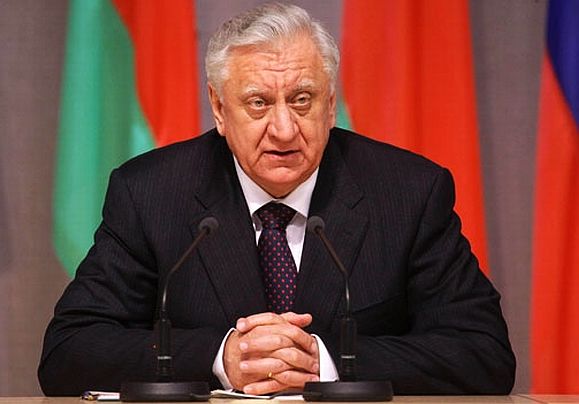
Belarus’ Economic Turnaround: Is It Sustainable?
Publication: Eurasia Daily Monitor Volume: 9 Issue: 227
By:

In early December, the Anti-Crisis Fund Council of the Eurasian Economic Community approved the latest (fourth) tranche of a $3 billion loan (Belarusian Telegraph Agency, December 7), approved in June 2011 to assist Belarus in overcoming an economic crisis. The Council is expected to release two further tranches in 2013. At the time the loan received sanction, the country was suffering from rampant inflation and had twice devalued the national currency, from 3,000 Belarusian rubles to the US dollar, to 8,500 to 1. Another problem was the depletion of gold and currency reserves. Some 18 months later, the government is lauding the country’s steady economic growth, replenishing of reserves and reduction of inflation, and is anticipating high growth rates in 2013. The question is whether the depiction of a dramatic economic turnaround is as accurate as portrayed.
In mid-November at the Belarus Investment Forum, Prime Minister Mikhail Myasnikovich, commented that Belarusians’ wages in both Belarusian rubles and dollars were increasing and that the population had strengthened its purchasing power. He anticipated “vigorous growth” in 2013. Inflation was likely to be 20 percent for the year, five times less than in 2011 (Belarusian Telegraph Agency, November 16). In his November 27 interview with Reuters, President Alyaksandr Lukashenka anticipated an 8.5-percent increase in GDP in 2013, which would allow Belarus to repay its debts on previous loans. But most analysts are skeptical about Belarus’s ability to overcome the crisis so readily. Myasnikovich agreed that the country had been on the verge of default. Vital Rymasheuski, co-chairman of the Belarusian Christian-Democratic Party, maintains that the European Union rescued Belarus by purchasing Belarus’s oil products, with support also coming from Russia, and murky export schemes for solvents and thinners (see EDM, November 27). Economist Barys Zhaliba believes that the Anti-Crisis Council’s loan saved Belarus from collapse (charter97.org, November 16). The main problem today is that repayment of debts actually lowers GDP growth.
Anton Boltochko notes that the country needs to find additional sources of revenues. And there are four possible means. First, it can revive exports to raise some $1.5–2 billion with schemes such as the sale of solvents. But this is a short-term solution that is reliant on manipulating the rules of the Customs Union. Second, it can attract additional credits from organizations like the IMF. Third, Belarus can either negotiate discounts for oil imports from Russia that are to be refined and resold or request more credits from Russia. And fourth, an option is to sell state-owned companies, a method that is under constant discussion but without many concrete results. Besides, the notion of selling off the most profitable firms, such as the potash company Belaruskali, seems irrational (naviny.by, December 3).
Only the second and fourth alternatives merit serious discussion. Russia is unlikely to countenance willingly further distortions of the Custom Union’s regulations, and requests for new loans from Moscow to Minsk are hardly a viable means to meet high debt repayments. Yaraslau Ramanchuk, head of the Mises Research Center in Minsk, commented that Belarus’ command economy “had exhausted its resources” and Russia was unwilling to issue further loans (AP, December 4). The IMF, which will discuss Belarus on December 14, has been quite critical of state economic policies. Belarus’ foreign debt now stands at $12 billion, with a repayment of $3 billion required next year—and slightly more than half of that figure consists of repayments to the IMF loan. The IMF mission to Belarus on October 18–29 advised the National Bank of Belarus to increase interest rates and halt unwarranted wage increases. Lukashenka’s response was that the agency should stop playing politics (https://bdg.by/news/economics/19384.html; Reuters, November 27).
Concerning option four, Lukashenka also revealed in his Reuters interview that five companies were interested in the sale of Belaruskali: one Chinese, one Indian, one based in an Arab state and two from Europe. He stated that the estimated price for the potash company is $30–32 billion. At the Investment Forum, on the other hand, Vice-Premier Uladzimir Siamashka came up with a price of $34–36 billion, and said that the state was willing to sell 10–15 percent of its shares (tut.by, December 2). Siamashka also revealed that the government is ready to resume negotiations for the sale of state shares of Naftan, a merged company from the Navapolatsk Oil Refinery and the Palimir Petrochemical Works. But to date, the anticipated offers from Russian companies have not emerged. As with Belaruskali, MTS, and others, the general perspective of the potential investors and purchasers is that the prices have been set too high.
Meanwhile, Belarusians continue to struggle. The average salary is now around $170-220, as opposed to $500 before deflation. In order to prevent a mass exodus of workers to Russia, where wages are higher, the president has introduced a ban on moving jobs for wood-processing workers, while pledging to increase wages to $1,000 by 2015. About one million residents of Belarus (around 14 percent of the workforce) are already working abroad in Russia and the eastern EU countries. The ban has been termed the “Serfdom Decree” by some critics. Employees of the affected firms can no longer resign without the permission of their managers (https://charter97.org/ru/news/2012/12/7/62491/). The likelihood is that the law will shortly be applied to other companies because workers are unlikely to be satiated with promises of future wage increases. The prevailing picture in Belarus is one of a government revisiting old remedies that prolong rather than eradicate the problems, and avoid any serious structural reforms that might address the greater predicament.




